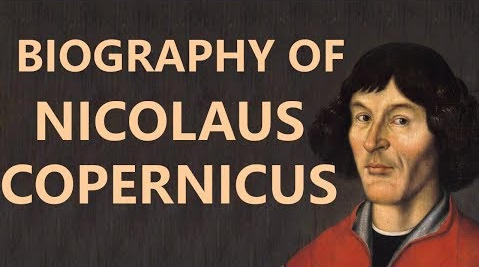Table of Contents
EARLY LIFE
- Nicolaus Copernicus was born on 19 February 1473 in the city of Toruń (Thorn), in the province of Royal Prussia, in the Crown of the Kingdom of Poland.
- His father was a merchant from Kraków and his mother was the daughter of a wealthy Toruń merchant. Nicolaus was the youngest of four children.
- Copernicus never married and is not known to have had children, but from at least 1531 until 1539 his relations with Anna Schilling, a live-in housekeeper.
GENIUS
- Copernicus is postulated to have spoken Latin, German, and Polish with equal fluency; he also spoke Greek and Italian, and had some knowledge of Hebrew.
- Copernicus was technically of German heritage. By the time he was born, Torun had ceded to Poland, rendering him a citizen under the Polish crown.
- During the mid-1480s, Copernicus’ father passed away. His maternal uncle, Bishop of Varmia Lucas Watzenrode, generously assumed a paternal role, taking it upon himself to ensure that Copernicus received the best possible education.
GENIUS
- In 1491, Copernicus entered the University of Cracow, where he studied painting and mathematics. He also developed a growing interest in the cosmos and started collecting books on the topic.
- By mid-decade, Copernicus received a Frombork canon cathedral appointment, holding onto the job for the rest of his life.
- The canon’s position afforded him the opportunity to fund the continuation of his studies for as long as he liked.
GENIUS
- In 1496 Copernicus took leave and traveled to Italy, where he enrolled in a religious law program at the University of Bologna.
- There, he met astronomer Domenico Maria Novara — a fateful encounter, as the two began exchanging astronomical ideas and observations, ultimately becoming housemates.
- In 1501 Copernicus went on to study practical medicine at the University of Padua. In 1503 Copernicus attended the University of Ferrara, where he took the necessary exams to earn his doctorate in canon law
GENIUS
- He hurried back home to Poland, where he resumed his position as canon and rejoined his uncle at an Episcopal palace.
- Copernicus remained at the Lidzbark-Warminski residence for the next several years, working and tending to his elderly, ailing uncle and exploring astronomy.
- In 1510 Copernicus moved to a residence in the Frombork cathedral chapter. He would live there as a canon for the duration of his life.
DEATH
- In May of 1543, mathematician and scholar Georg Joachim Rheticus presented Copernicus with a copy of a newly published De revolutionibus orbium coelestium. Suffering the aftermath of a recent stroke, Copernicus was said to have been clutching the book when he died in his bed on May 24, 1543 in Frombork, Poland.
- Throughout the time he spent in Lidzbark-Warminski, Copernicus continued to study astronomy presented an alternative to Ptolemy’s model of the universe and significantly influenced Copernicus’ research.
HELIOCENTRIC MODEL
- Scholars believe that by around 1508, Copernicus had begun developing his own celestial model, a heliocentric planetary system.
- Copernicus’ heliocentric solar system named the sun, rather than the earth, as the center of the solar system. Subsequently, Copernicus believed that the size and speed of each planet’s orbit depended on its distance from the sun.
- Though his theory was viewed as revolutionary and met with controversy, Copernicus was not the first astronomer to propose a heliocentric system
CRITICISM
- But a heliocentric theory was dismissed in Copernicus’ era because Ptolemy’s ideas were far more accepted by the influential Roman Catholic Church, which adamantly supported the earth-based solar system theory.
- Around 1514, Copernicus completed a written work, Commentariolus, a 40-page manuscript which summarized his heliocentric planetary system.
SEVEN AXIOMS
1) Planets don’t revolve around one fixed point;
2) The earth is not at the center of the universe;
3) The sun is at the center of the universe, and all celestial bodies rotate around it;
4) The distance between the Earth and Sun is only a tiny fraction of stars’ distance from the Earth and Sun;
5) Stars do not move, and if they appear to, it is only because the Earth itself is moving;
6) Earth moves in a sphere around the Sun, causing the Sun’s perceived yearly movement; and
7) Earth’s own movement causes other planets to appear to move in an opposite direction.
Biography Free PDF






















 WhatsApp
WhatsApp